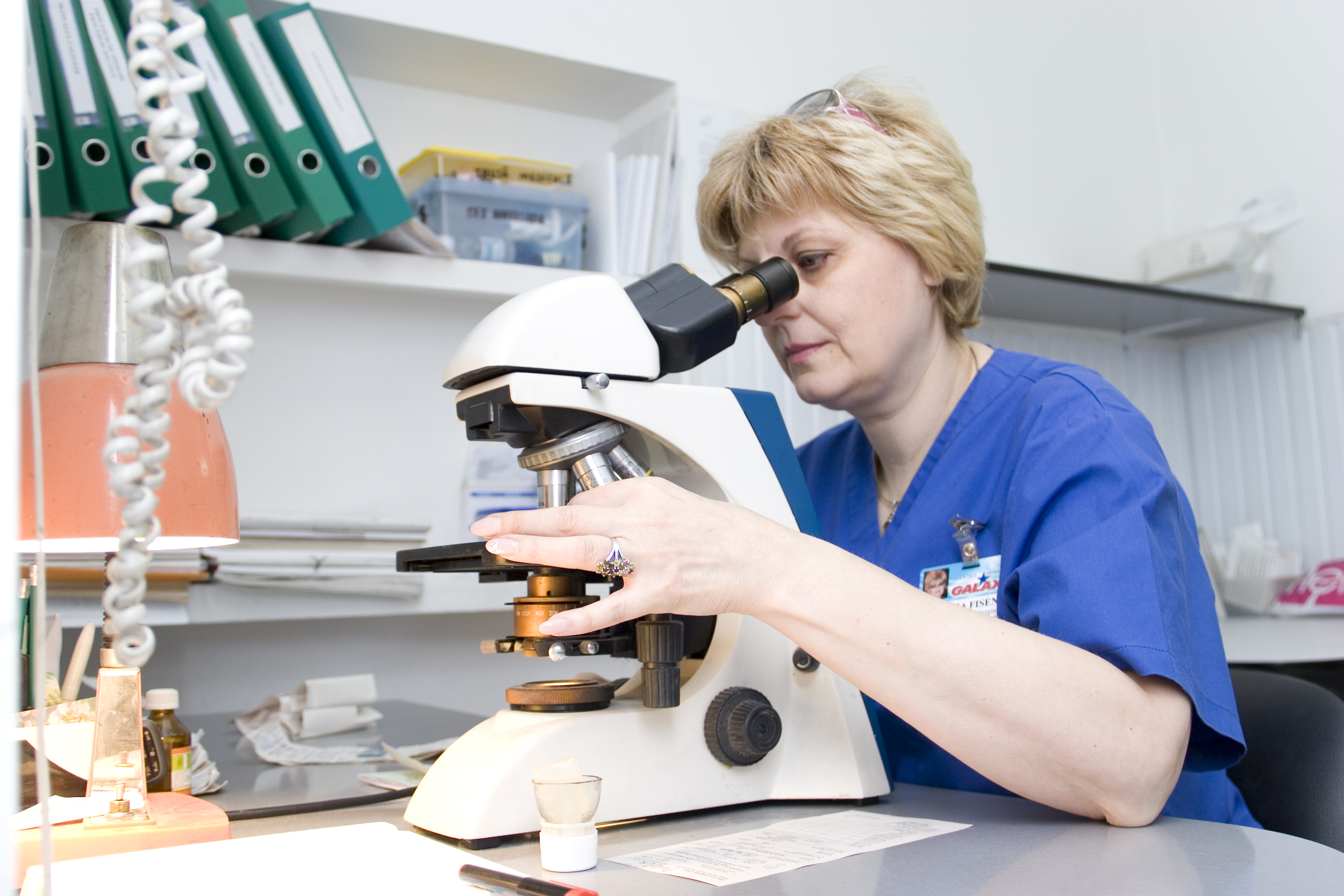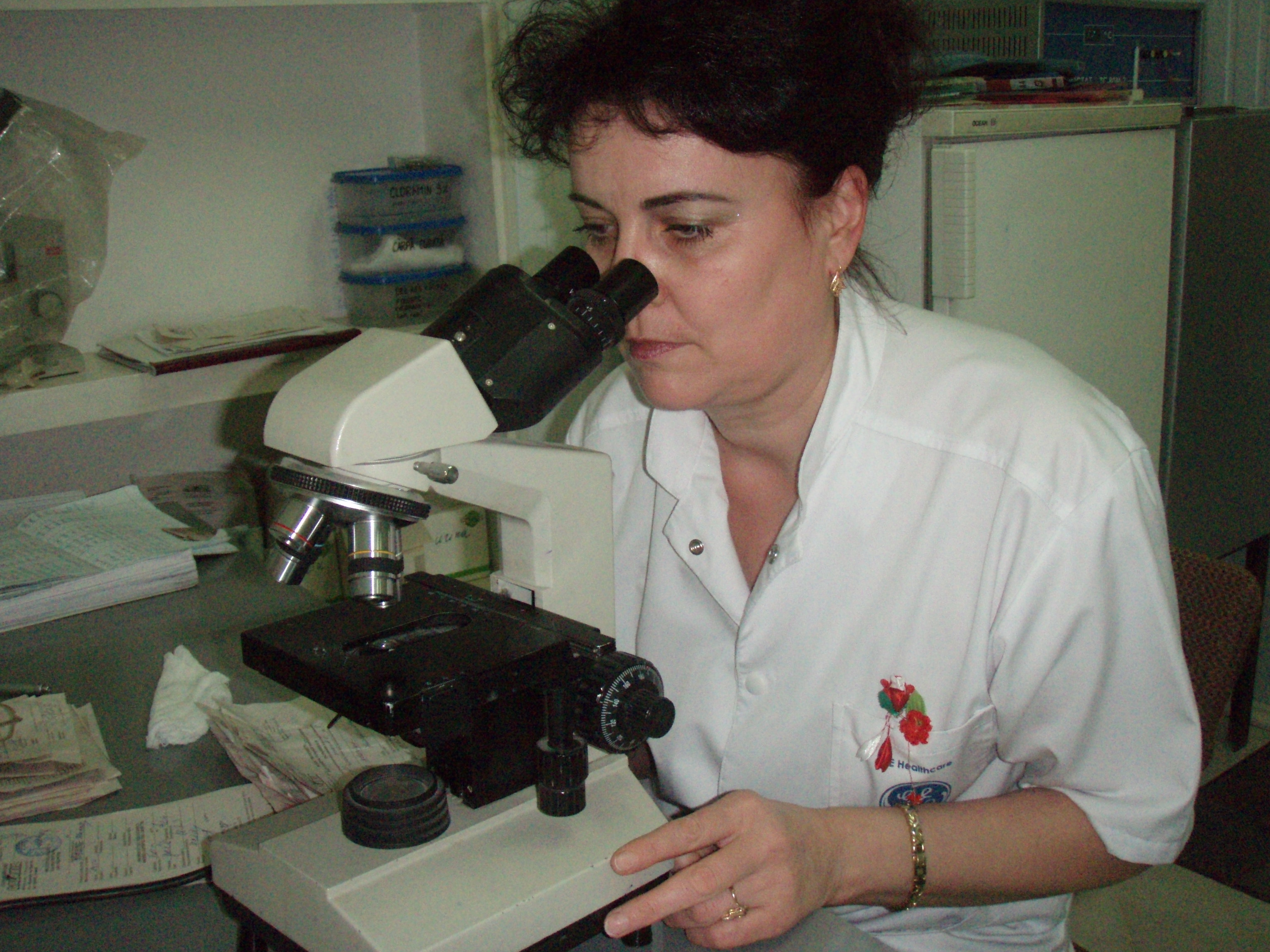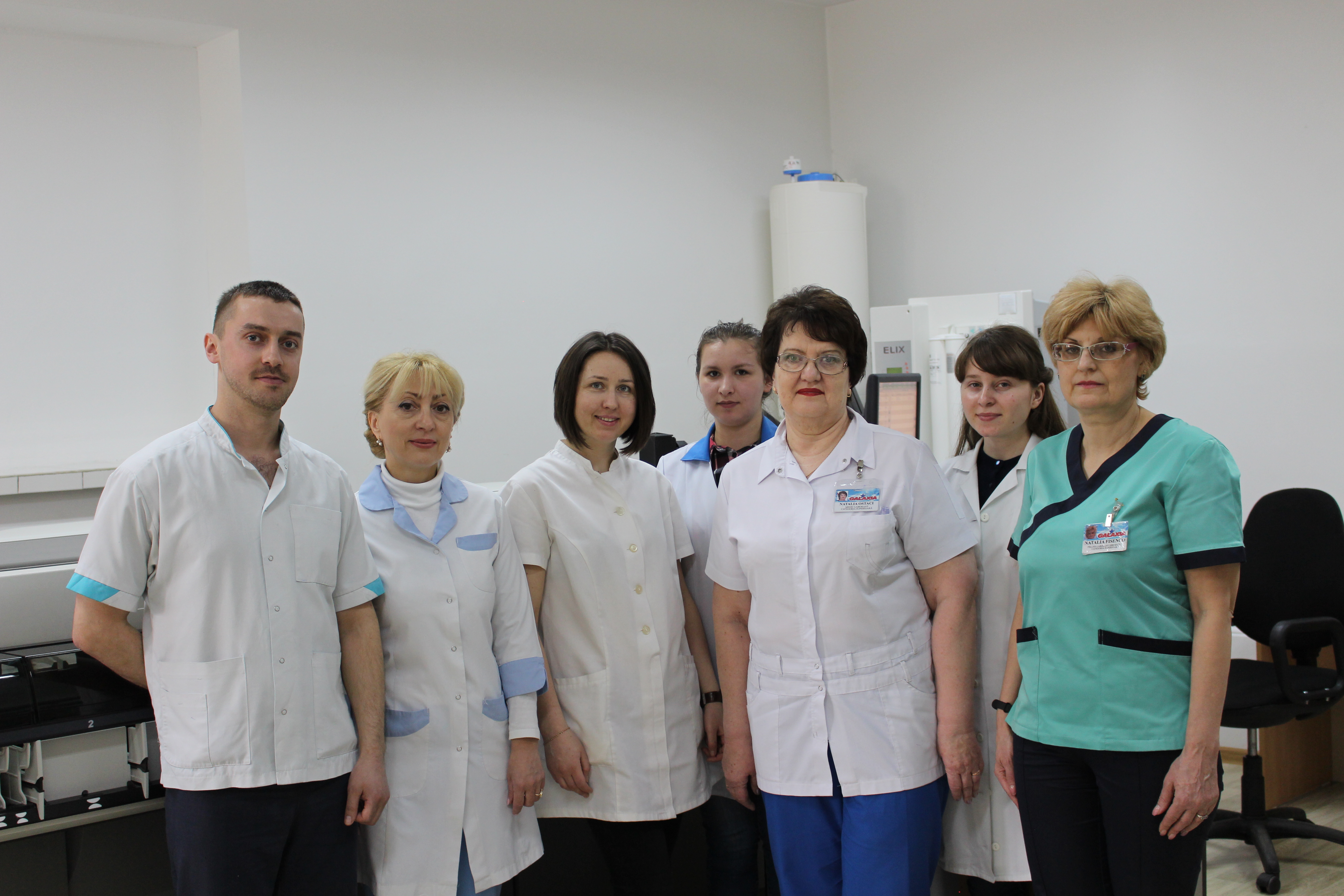a)
General tests:
1. General blood analysis;
2. Determination of coagulation time;
3. General urinalysis;
4. Zimniţchi Sample;
5. Neciporenco test;
6. Coprologic test;
7. Determination of helminth eggs;
8. Spermogram;
b) Cytology:
1. Urethral and prostate smear;
2. Smear of the vagina and cervix;
3. Helicobacter Pylori cytological assay;
c) Biochemical analyzes:
1. General protein; 2. Albumin;
3. Urea;
4. Creatinine;
5. Bilirubin;
6. Cholesterol;
7. ALAT;
8. ASAT;
9. Alkaline phosphatase;
10. L-amylase;
11. Timol;
12. Glucose; 13. Ca;
14. Cl;
15. Fe;
16. Roberg test;
17. Functional kidney samples;
18. Determination of the blood group;
19. Determination of Rezus factor;
20. Dose of glucose in urine;
21. Dose of acetone in the urine;
d) Rheumatic evidence:
1. C-reactive protein;
2. Rheumatoid factor;
3. Anti-streptolysin antibodies;
e) Haemostasis:
1. Prothrombin index;
2. Fibrinogen;
3. Ethanol test;
4. Lee-Wait coagulation time;
f) Immunology:
1. MRS;
2. AIDS;
3. Determination of Helicobacter Pylori;
4. Determination of Hlamidies;
g) Markers of hepatitis:
1. Determination of HbsAg;
2. Determination of Anti HBcor Summary;
3. Determination of Anti HCV;
4. Determination of HDVAb Delta;
h) Hormones:
1. T3;
2. T4;
3. TSH;
4. FSH;
Cortisol;
6. Testosterone;
7. Progesterone;
8. Prolactin; estradiol;
10. LH;
11. PSA;
12. Immunoglobulin E;
i) Bacteriological examination:
1. bacteriological examination of biosubstrate with antibiotic detection;
2. Chlamydia smear (immunofluorescence method);
3. The smear of prostate secretion;
4. The vaginal elimination smear;
5. Blood analysis for sterility;
6. Determination of pathogens of disinterment in the biological substrate;
7. Determination of salmon in the biological substrate;
8. Determination of pathogenic escherition in the biological substrate;
9. Examination of faecal mass to pathogenic flora (by semicantitative method);
10. Determination of intestinal dysmicrobism;
11. Examination of various biological substrates to microflora (urine, pus, eyelid, ears, vagina).




